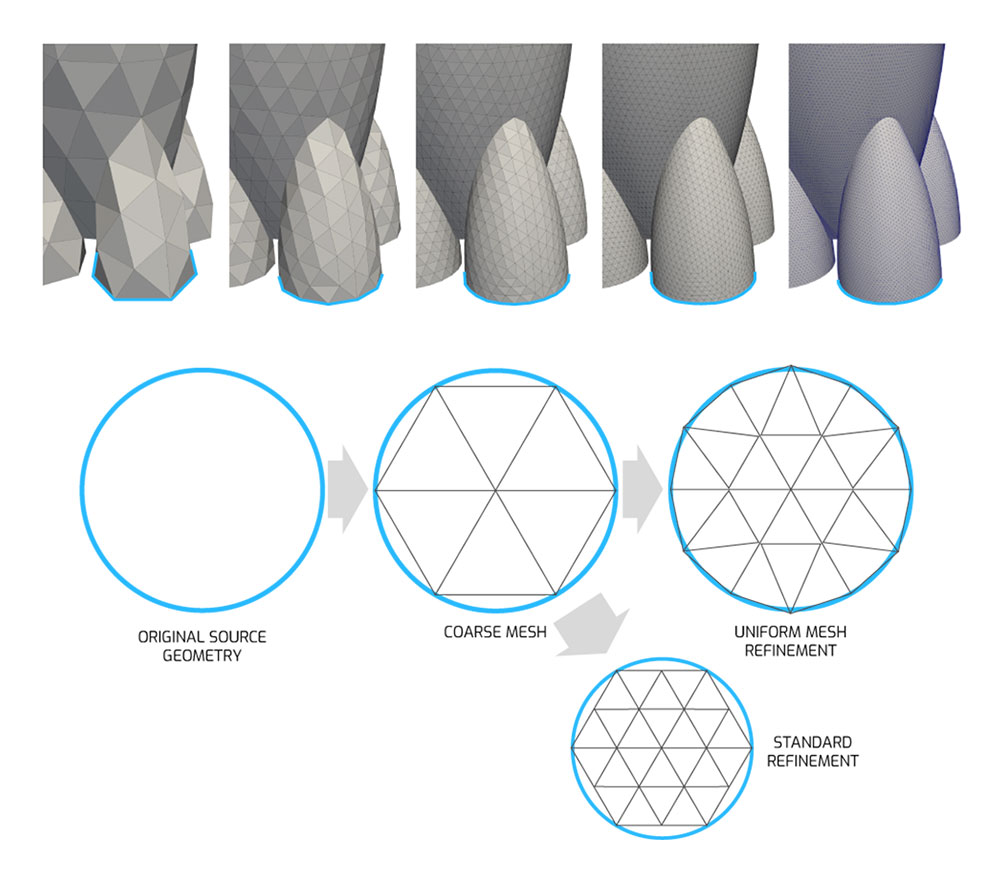For an anxious air traveler, it’s important to know the bumpy seats are in the back. For scientists and engineers, understanding how conditions like vibration, pressure and temperature change throughout an object is important, too — whether it’s on the wing of an airplane or in the center of a nuclear reactor.
Using what is called a computational mesh, scientists have been able to divide digital objects into millions of polygons, or elements, to predict these kinds of variations in HPC simulations with impressive precision. Now, Sandia is enabling scientists to create meshes with billions of elements, far past the limit of standard meshing software, opening the door for ultra-high-resolution simulations in aerospace, national security, energy and medicine.
The new code, called Uniform Mesh Refinement (UMR), is especially important as a new generation of supercomputers is emerging. Called, exascale computers, these are the first machines with enough processing power to run calculations on meshes made of tens or hundreds of billions of elements. Without a mesh, though, the potential of these computers would go untapped.
Refining a mesh means subdividing pieces of a coarse, blocky one, while smoothing rough edges until it reaches the desired resolution. Creating a basic mesh is complex enough, so building one with billions of elements on conventional software takes too much time and creates a file that’s too large to be practical. That’s where UMR takes over and finishes the job with a more efficient algorithm.

After scientists use available software to build a crude mesh, they can copy that file onto an HPC system. There, the new Sandia code takes advantage of parallel processing in ways conventional meshing software can’t, so it runs much faster — generating over 100 billion elements in minutes. It can also operate entirely in the computer’s temporary memory, so it doesn’t generate massive files.
Originally developed for the code EMPIRE, a plasma physics simulation that will be used to advance aerospace, fusion and astrophysics research, Uniform Mesh Refinement is compatible with a commonly used, open-source mesh interface called SEACAS, which means many application codes at Sandia, other Department of Energy labs and other research institutions can use it.
The Sandia Geometry and Meshing team also created a version of the tool for laptops and small workstations. This version generates up to four billion elements in less than a minute to help researchers gauge quickly how fine a mesh they need to get the results they’re after. It benefits individuals who do not necessarily need exascale computing power or have limited access to high performance computers and can’t afford to run a simulation only to find they had used the wrong resolution.
This version of UMR is distributed along with CUBIT™ to about 2,000 users across about 165 sites within the United States for government purposes.